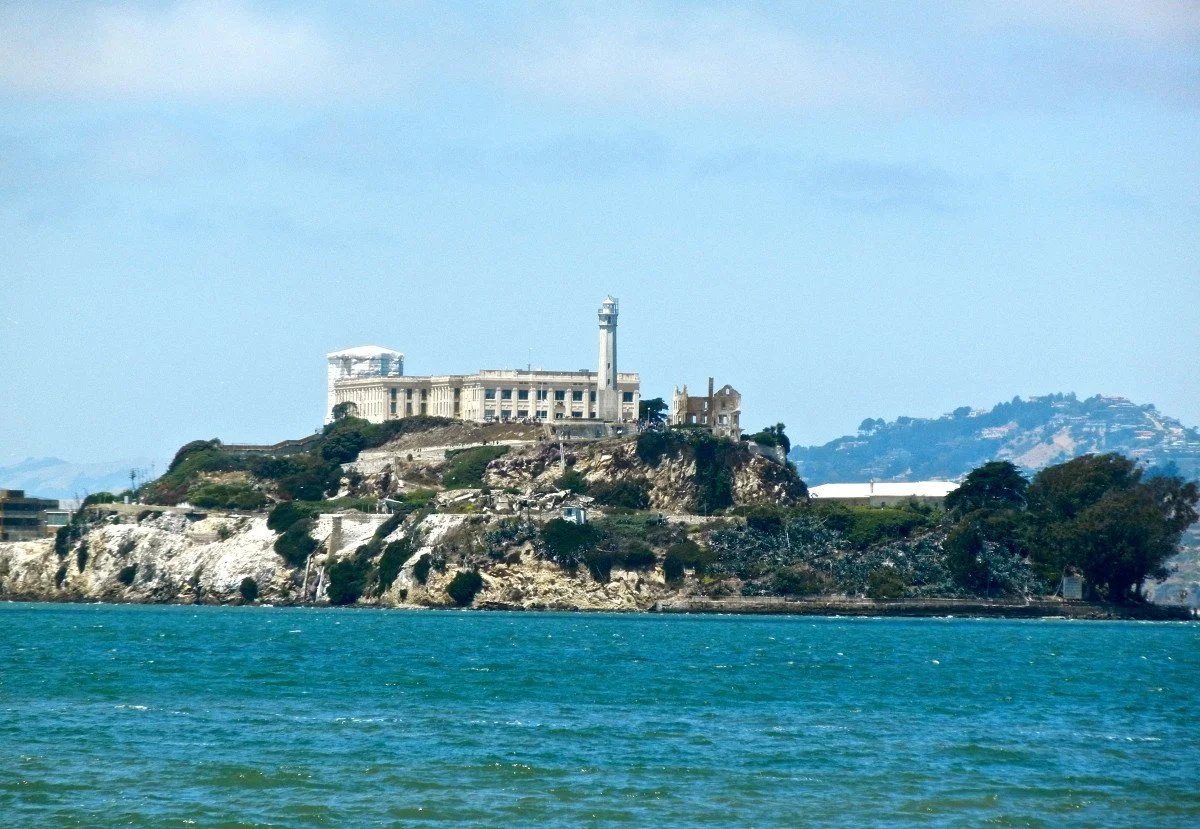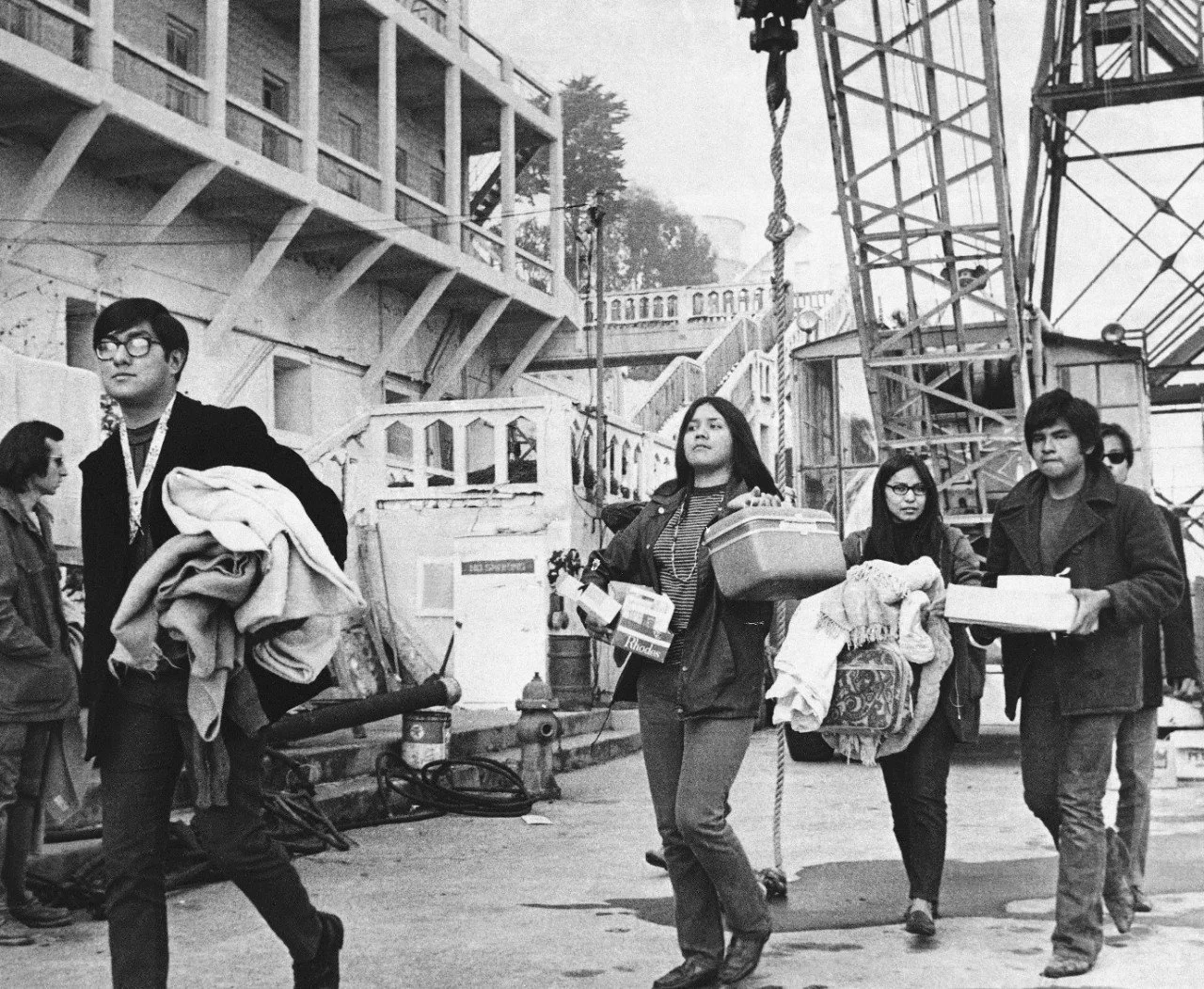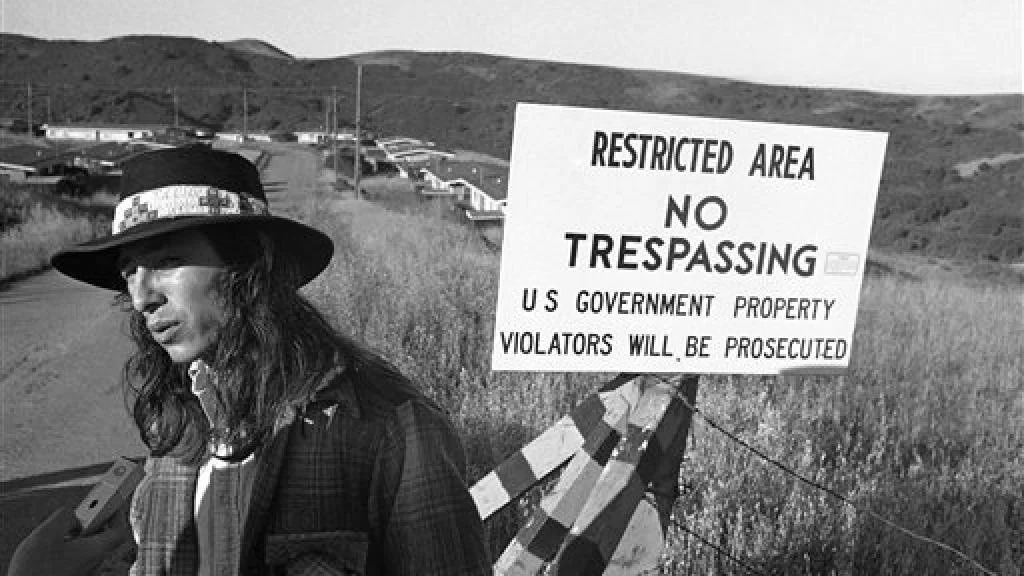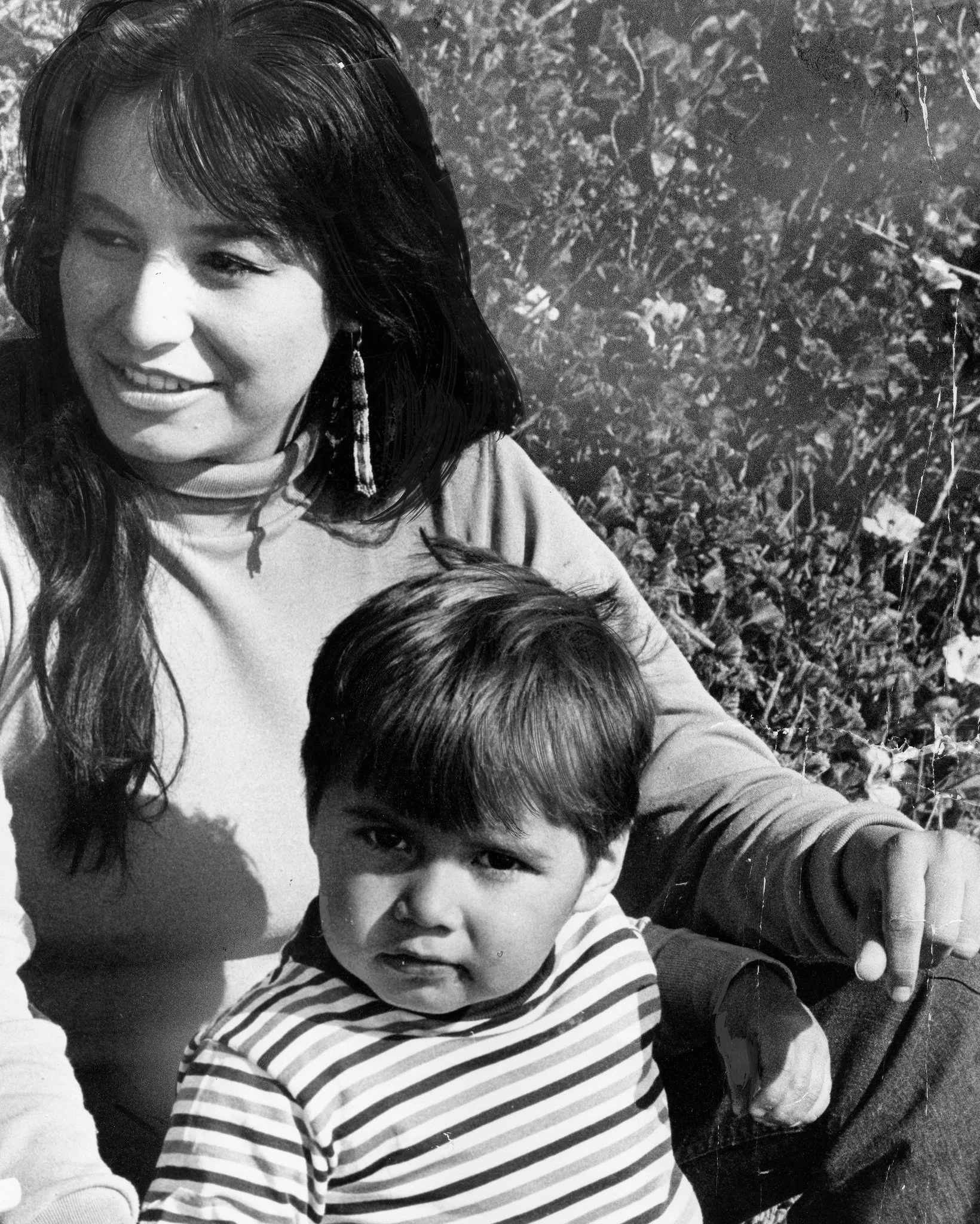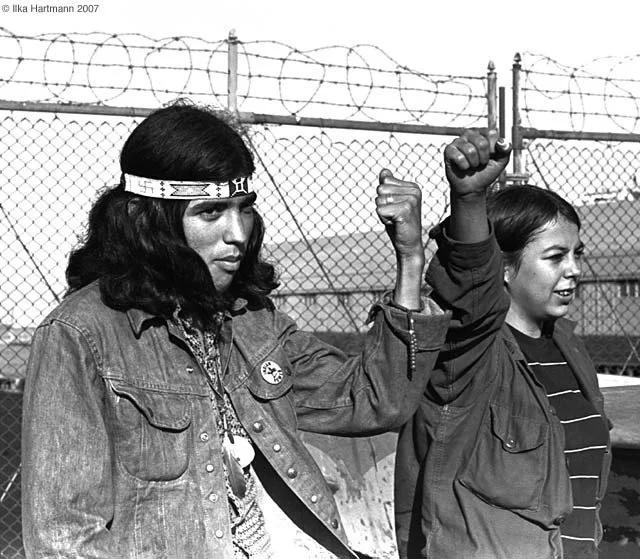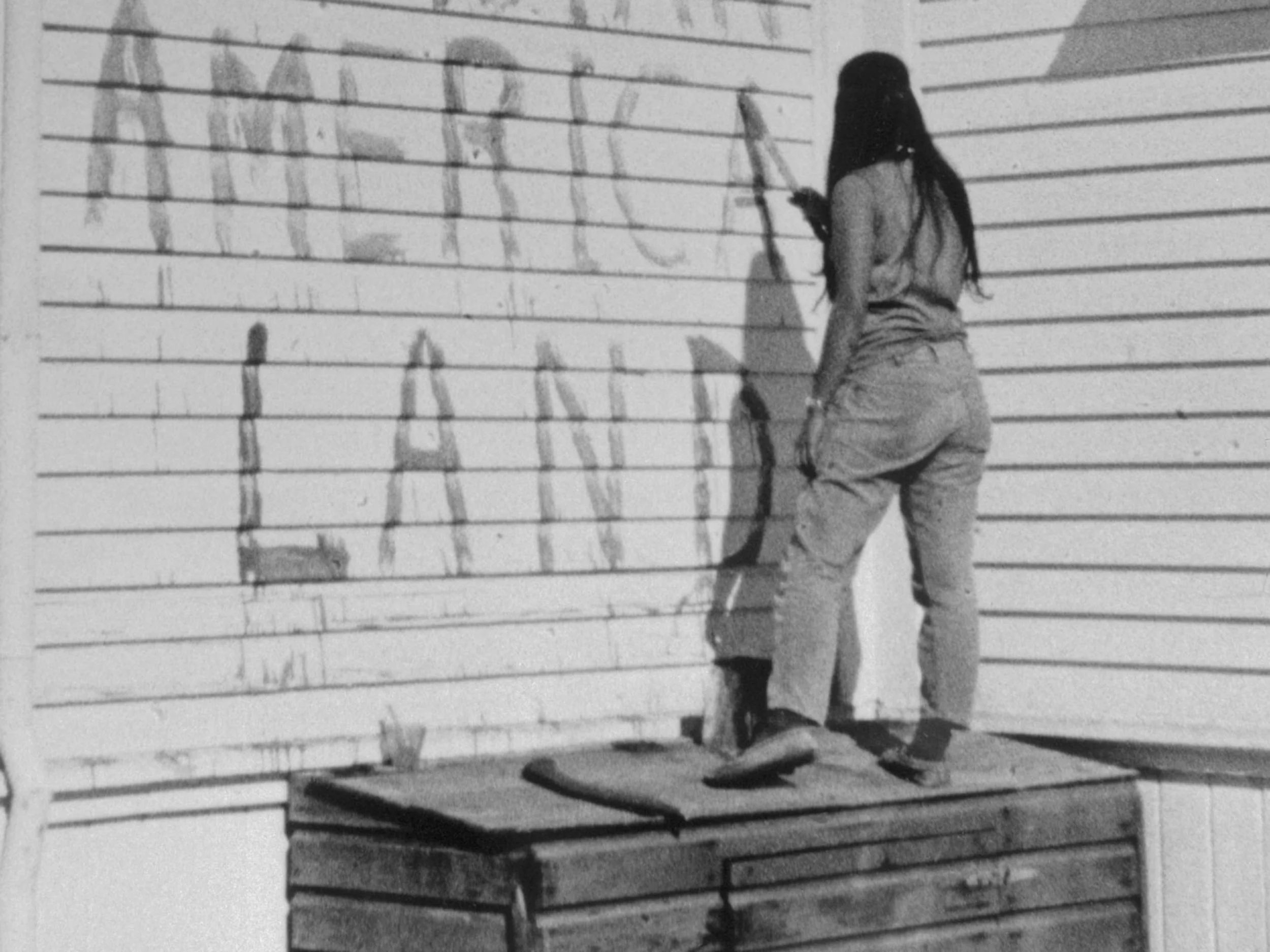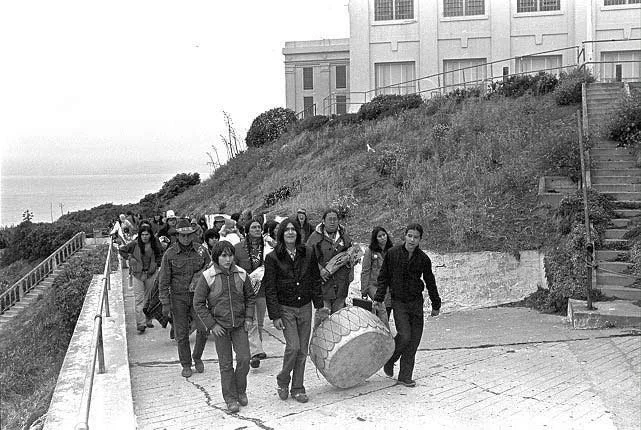THE TAKING OF ALCATRAZ -- "WE HOLD THE ROCK!"
SAN FRANCISCO, NOVEMBER 1969 — Days before Thanksgiving, in the dark and damp of 4:00 a.m., several sailboats docked on Alcatraz Island in San Francisco Bay. Alcatraz's caretaker had been warned of the invasion. Now he looked out his window to see shadowy forms approaching. He ran to his radio. “Mayday! Mayday!” he called. “The Indians have landed!”
For the next 19 months, the occupiers of Alcatraz dug in. The group included Cherokee and Ojibwa, Mohawk, Sioux, and other native nations. They hoped to reclaim Alcatraz as “Indian land.” They failed. But their long-term goal – to awaken a nation – was a triumph.
The siege of Alcatraz was an American uprising waged by the first Americans, supported by other Americans -- activists, celebrities, journalists. Before it ended, the daring action caused a seismic shift in attitude. The era of "cowboys and Indians" became the age of Bury My Heart at Wounded Knee. The change began with the simple statement – “Welcome to Alcatraz, you are now on Indian land.”
Little in La Nada Boyer’s childhood prepared her to occupy federal turf. Instead, the Shoshone woman was accustomed to having her own nation occupied. But at 3:00 a.m. on November 20, Boyer and her infant son climbed aboard a small, crowded sailboat. She had classes that day at UC Berkeley where she was the first Native-American student. She figured she would miss them.
Near Boyer sat Richard Oakes. A student at San Francisco State, Oakes made no claim to leadership, but reporters, calling the tall Mohawk “a young Victor Mature” gravitated to him. With Oakes was his 12-year-old step-daughter, Yvonne. Within a month, Yvonne would fall to her death on Alcatraz, sending Oakes home to mourn. But he would return to the island, and later lead native occupations throughout the West.
For decades, Alcatraz had been America's most notorious prison, home to Al Capone, "Machine Gun" Kelly, and its famous Birdman. The last prisoner was removed in 1963, leaving cell blocks to molder. The decrepit prison was a grim place, one Native occupiers came to loathe. Still they stayed. Now, they told the world, the first sight seen by ships entering the Golden Gate was Indian Land.
The Nixon White House made plans to storm the island, then thought better. Coast Guard cutters swarmed the waters, chasing speedboats bringing still more natives. Helicopters buzzed overhead. Reporters came, spreading the news, drawing native peoples from as far as South America. “Alcatraz has unified Indians for a second time,” one told the Los Angeles Times. “The first time was against Custer.”
A California Congressman proposed giving Alcatraz to the natives. The state assembly backed the idea but Governor Ronald Reagan did not. Marlon Brando, Anthony Quinn, and Candice Bergen visited Alcatraz. Occupiers began “Radio Free Alcatraz” broadcasts, proclaiming “We hold The Rock!” Richard Oakes offered to buy the island for $24 in beads.
With the federal government hamstrung, the siege dragged on through a native Thanksgiving – turkeys provided by San Francisco restaurants -- and past Christmas. Holed up in the echoing prison, La Nada Boyer set up Big Rock School to teach native arts and lore. Children ran through the fog playing “Indians and Federal Guys.” Graffiti proclaimed “THIS LAND IS MY LAND” and “We, the Indians, discovered America.” Boats ran the Coast Guard blockade, landing food and clothing.
The uprising captured the spirit of a radical age. Anthropologist Margaret Mead praised the siege as “a magnificent piece of dramatization.” TV host Merv Griffin did a show from “The Rock.” Newspaper cartoons depicted natives heading for “powwows” on Alcatraz.
But as the siege continued, tensions flared. Natives had to fend off hippies pitching tents, ministers come “to preach the gospel to the heathens,” and others offering drugs or sex. Living in cement catacombs, many felt watched by ghosts. Factional fighting pit young radicals against elders. In March, Nixon officials came to negotiate. Natives rejected their offer to turn Alcatraz into a national park with a “maximum Indian quality.” Instead, they demanded the deed to “The Rock” and $300,000 for their own university on the island. Nixon’s Secretary of the Interior considered the proposal, but hard-liners prevailed.
In late May 1970, the government cut off electricity. Supporters sent gas-powered generators and barrels of water. The siege continued. On June 1, fire gutted the oldest lighthouse on the West Coast. The government blamed the occupiers who blamed government saboteurs. Throughout a frigid summer, natives huddled around campfires while San Francisco glimmered in the distance.
Meanwhile, inspired by Alcatraz, natives occupied a federal fort in Seattle, swarmed the Mayflower II in Plymouth, and sailed toward Ellis Island. Despite White House caution against “a unified attack on the Indians,” federal marshals repelled each occupation.
President Nixon, struggling to quell the rising militancy, proposed 22 changes in federal policy. “It is long past time that the Indian policies of the federal government began to recognize and build upon the capacities of the Indian people," Nixon announced. Most of the changes were adopted, increasing Indian autonomy. Back on Alcatraz, natives restored the lighthouse, but its faulty beacon raised fears of shipwreck. On August 11, an arrow struck a cruise ship taking tourists past the island. Then two tankers collided in the darkness near the Golden Gate Bridge.
By the spring of 1971, Richard Oakes, La Nada Boyer and other original occupiers were leading protests across America. On Alcatraz, only the most militant remained. Finally, on June 11, the Coast Guard invaded the island to remove six men, four women, and five children. The siege was over, but its spirit lived on in the nascent American Indian Movement.
“We came to Alcatraz with an idea. We would unite our people and show the world that the Indian spirit would live forever. . . The idea was born and spread across this land, not as a fire of anger, but as a warming glow.”
– Indians of All Tribes
